Want to give your garden a super-powered boost? Think rich, dark compost! But who has the time to make massive amounts? That’s where garden compost delivery comes in. It’s a total game-changer for busy gardeners. Let’s break down how to get the best compost delivered right to your door, making your plants happier and your job easier. We’ll cover everything you need to know to pick the right stuff and use it like a pro. Ready to dig in?
Why Choose Garden Compost Delivery?
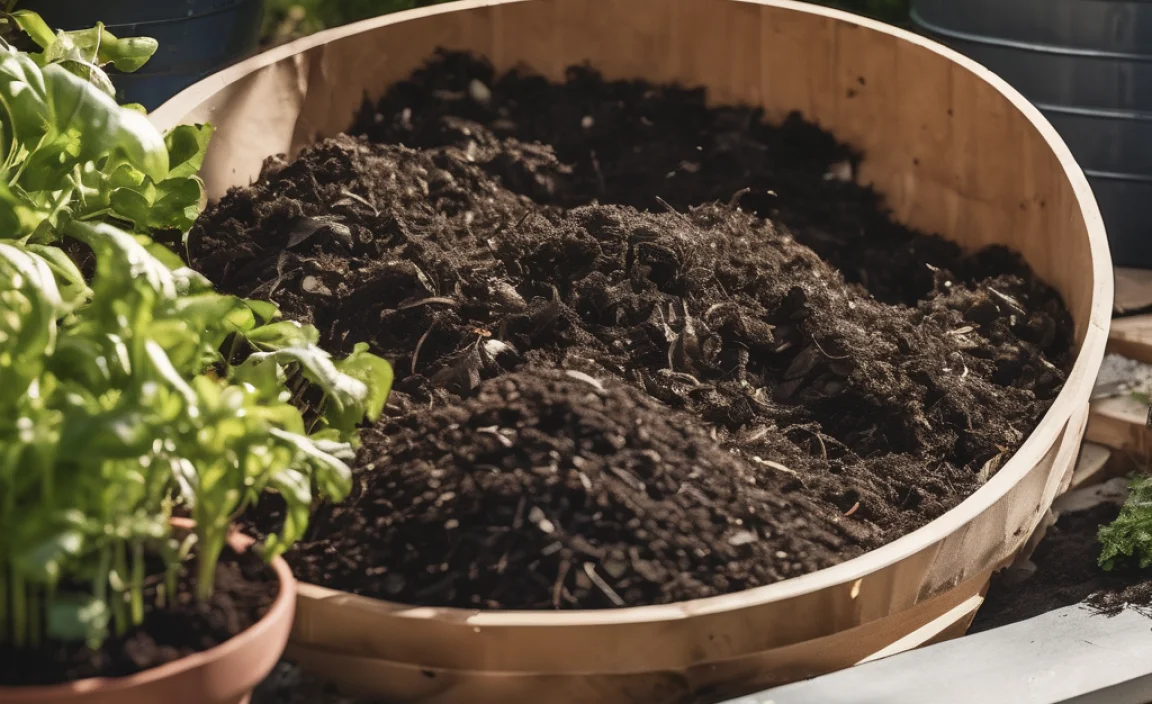
Making your own compost is fantastic, but let’s be honest, it takes time, effort, and space. If you’re looking for a quick and easy way to get high-quality compost without the mess and wait, delivery is the way to go. It’s perfect for:
- Saving Time: Skip the composting process and get straight to improving your soil.
- Consistent Quality: Reputable suppliers offer well-screened, nutrient-rich compost.
- Large Projects: Need a lot of compost for a new garden bed or a whole yard renovation? Delivery handles the heavy lifting.
- Convenience: It arrives right at your doorstep, ready to be spread.
- Specialized Compost: You can often find specific types of compost tailored for different needs.
Understanding Your Compost Needs
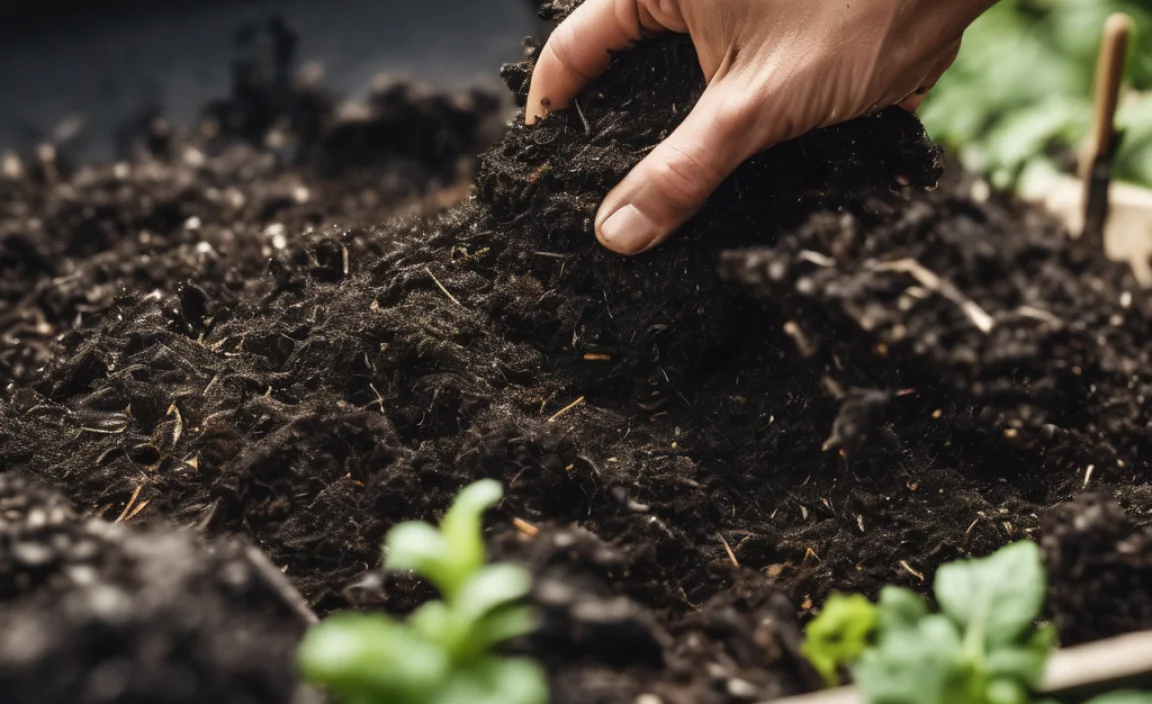
Before you click “buy,” it’s helpful to know what you’re looking for. Not all compost is created equal! Think about what your garden needs most. Are your plants looking a little tired? Is your soil a bit sad and compacted? Most garden compost is made from decomposed organic matter, like yard waste and food scraps, and it’s packed with goodness for your soil. It helps improve soil structure, drainage, and aeration, while also providing essential nutrients for plant growth.
Here are a few common types you might encounter:
- Screened Top-Quality Compost: This is your all-around hero. It’s been screened to remove large chunks, making it smooth and easy to spread. It’s great for general soil improvement in garden beds, around trees and shrubs, and for new lawn seedings.
- Mushroom Compost: Often a blend of aged manure, straw, and other organic materials used for growing mushrooms. It’s rich in nutrients and can help amend clay soils.
- Leaf Mold: Made purely from decomposed leaves. It’s fantastic for improving soil structure, especially for acid-loving plants like blueberries and rhododendrons, but it takes longer to produce.
- Manure-Based Compost: Compost made primarily from animal manure (cow, horse, chicken). It’s nutrient-dense but needs to be well-aged to avoid burning plants.
The best way to figure out what you need is to think about what you’re trying to achieve. If you’re unsure, a good quality screened compost is always a safe bet. You can learn more about the benefits of compost from the Environmental Protection Agency.
How to Order Garden Compost Delivery
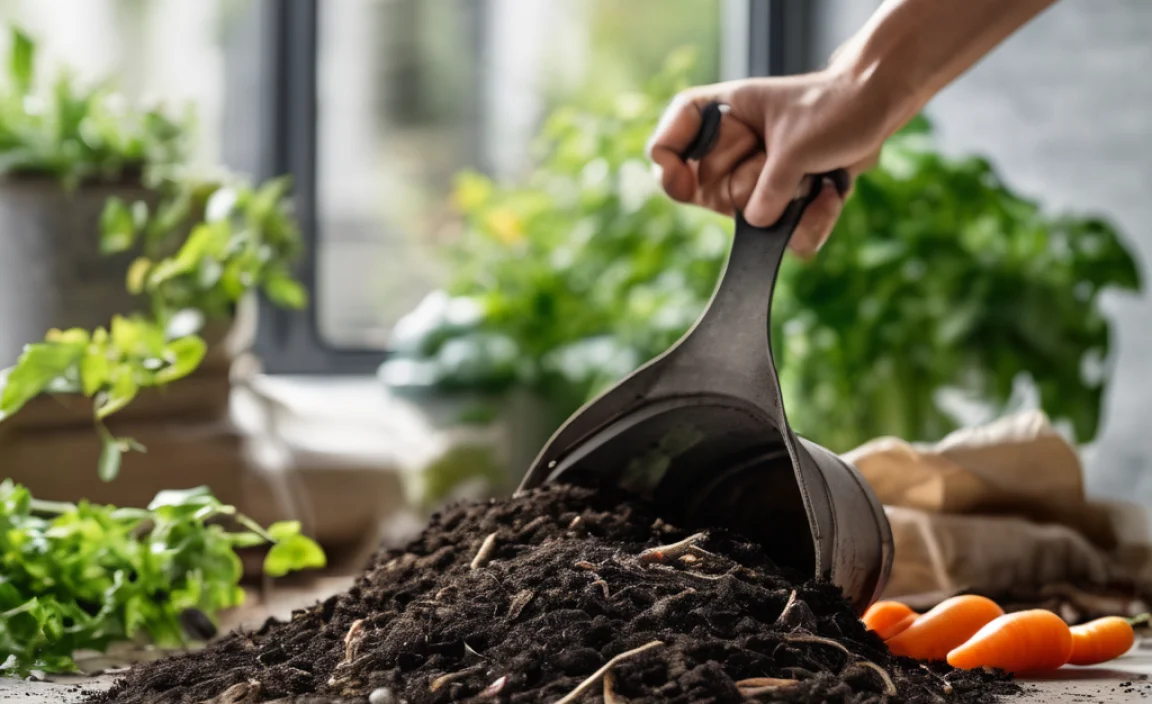
Ordering compost delivery is usually pretty straightforward. Most companies have similar processes. Here’s a step-by-step guide to make sure you get what you need, when you need it.
Step 1: Find a Reliable Supplier
This is the most crucial step! You want to work with a company that knows their compost and delivers on their promises. Look for:
- Local Companies: Search for “garden compost delivery near me.” Local suppliers often have better rates and you’re supporting a local business.
- Reviews and Reputation: Check online reviews on Google, Yelp, or local gardening forums. What do other customers say about the quality of the compost and the delivery service?
- Product Information: Do they clearly describe their compost products? Can they tell you what’s in it and how it’s made?
- Delivery Options: Do they deliver to your area? What are their delivery fees and minimum order requirements?
A good starting point might be your local garden center. They often have partnerships with bulk materials suppliers or can recommend reputable ones.
Step 2: Determine How Much Compost You Need
This is where a little math comes in, but don’t worry, it’s easy! Garden compost is typically sold by the cubic yard or cubic meter. You need to figure out the volume of the area you want to cover.
Formula for Volume:
Length × Width × Depth = Volume
- Length and Width: Measure the length and width of your garden bed, lawn area, or planting space in feet (or meters).
- Depth: Decide how deep you want to spread the compost. For general soil improvement, 2-4 inches is common. For new beds, you might go deeper (6-12 inches). Make sure to convert this depth to feet (divide inches by 12). For example, 3 inches is 3/12 = 0.25 feet.
Example:
Let’s say you have a garden bed that is 10 feet long and 5 feet wide, and you want to add compost 3 inches (0.25 feet) deep.
Volume = 10 feet × 5 feet × 0.25 feet = 12.5 cubic feet
Compost is usually sold by the cubic yard. There are 27 cubic feet in one cubic yard (3 ft x 3 ft x 3 ft).
So, 12.5 cubic feet / 27 cubic feet/yard = approximately 0.46 cubic yards.
It’s always a good idea to order a little extra, especially if you’re doing a large area, as it can settle. Most suppliers will have a minimum order quantity, often 1 cubic yard.
Step 3: Understand Delivery Logistics
When you place your order, ask about:
- Delivery Location: Where will they dump the compost? Most companies will dump it in a pile on your driveway or in a clear spot near the curb. Be specific about where you want it.
- Bagged vs. Bulk: Many suppliers offer compost in large bags (often called “super sacks” or “bulk bags”) or as a loose bulk delivery. Bulk delivery is usually more cost-effective for larger quantities.
- Delivery Time: Can you schedule a specific day? What are their delivery windows?
- Accessibility: Make sure the delivery driver can easily access your property. Avoid ordering if there are narrow gates, overhead obstructions, or tight corners that a large truck might struggle with.
- Unloading Method: Will they use a dump truck with a chute, or a smaller truck with a forklift for super sacks? Knowing this can help you prepare your site.
Step 4: Prepare Your Delivery Site
Before the delivery truck arrives, make sure the spot where you want the compost dumped is clear and accessible.
- Remove any obstacles like cars, bikes, gardening tools, or lawn furniture.
- If you have a specific spot in mind (e.g., near your garden beds), ensure it’s easily reachable for the truck.
- If you’re concerned about protecting your driveway from potential stains or damage, you can place a heavy-duty tarp or plywood down before the delivery, but check with the supplier if this is okay.
Step 5: Receive Your Delivery
When the delivery day arrives, try to be home if possible, especially for your first order. This way, you can point out the exact spot for the delivery and ask any last-minute questions.
Inspect the compost as it’s being delivered. Does it look like good quality? Is it the amount you ordered? If you ordered a bulk pile, is it roughly the size you expect?
How to Use Your Delivered Compost
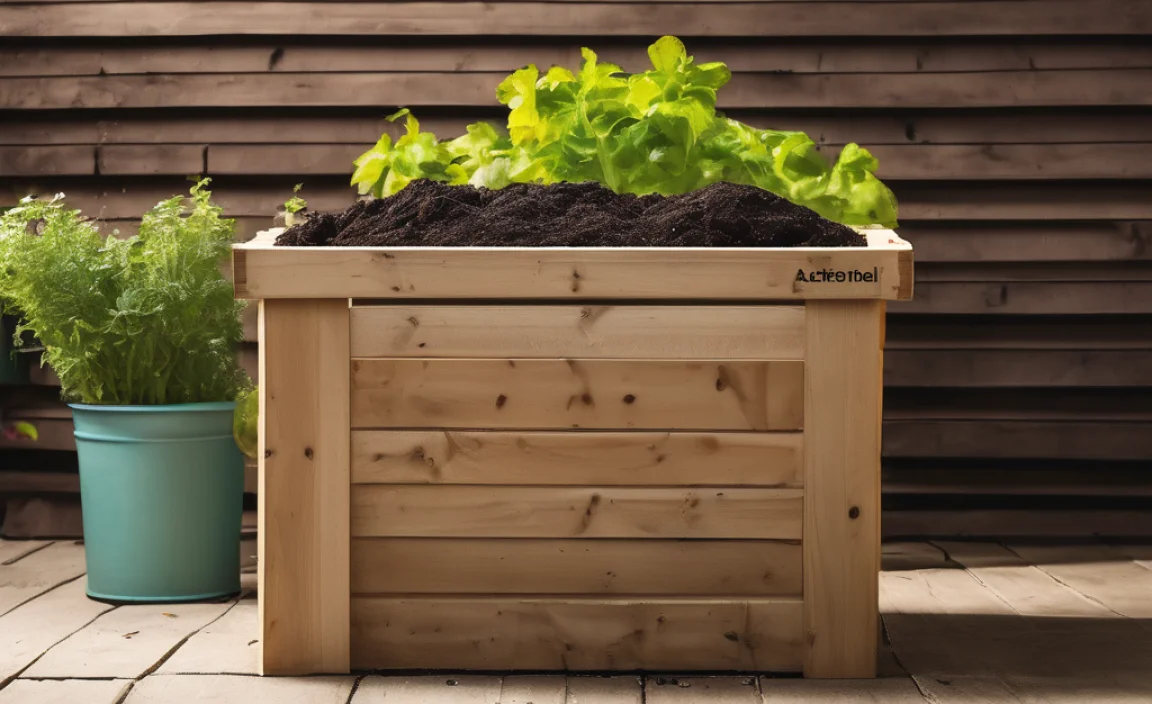
Once that beautiful compost is on your property, it’s time for the fun part – spreading it! Here are some popular ways to use fresh, delivered compost:
Top-Dressing Garden Beds
This is one of the easiest and most effective ways to use compost. Simply spread a layer of compost (about 1-2 inches thick) over the surface of your existing garden beds any time of year, but especially in spring or fall.
How-to:
- Gently rake away any loose debris.
- Spread the compost evenly over the soil surface, keeping it a little away from the base of plants/stems to prevent rot.
- You can lightly fork it into the top inch or two of soil, or just leave it on top to let worms and rain do the work of incorporating it.
Amending New Garden Beds
If you’re creating a brand new garden bed, compost is your secret weapon for creating rich, healthy soil from the start.
How-to:
- Dig out the area for your new bed to the desired depth (e.g., 8-12 inches).
- Mix your excavated soil with a generous amount of compost. A common ratio is 50/50 compost to native soil, or even more compost if your native soil is very poor.
- Fill the bed back in with the amended soil.
- Plant away!
Improving Lawn Health
A thin layer of compost can work wonders for your lawn, improving drainage, adding nutrients, and encouraging stronger root growth.
How-to:
- Spread a thin layer (about 1/4 to 1/2 inch) of screened compost over your lawn.
- Use a rake or a specialized lawn spreader to distribute it evenly.
- Gently rake it into the grass to ensure it settles down to the soil level.
- This can be done before seeding a new lawn or overseeding an existing one.
Mulching Around Trees and Shrubs
Compost acts as an excellent mulch. It helps retain moisture, suppress weeds, and slowly enriches the soil as it breaks down.
How-to:
- Spread a layer of compost 2-3 inches deep around the base of your trees and shrubs.
- Keep the compost a few inches away from the trunk or main stems to prevent moisture buildup and potential rot or pest issues.
- This creates what’s often called a “compost ring.”
Container Gardening and Potting Mixes
While pure compost might be too dense for containers on its own, it’s a fantastic ingredient in homemade potting mixes. It adds nutrients and improves water retention.
How-to:
- Mix compost with other ingredients like perlite, vermiculite, peat moss, or coconut coir to create a well-draining potting mix. A common DIY mix is 1/3 compost, 1/3 peat moss/coir, and 1/3 perlite/vermiculite.
- Use this mix for your potted plants, flowers, and vegetable containers.
For more on soil health, the University of Wisconsin Extension offers great resources, like their Soil Testing and Health page.
Comparing Bulk Compost vs. Bagged Compost
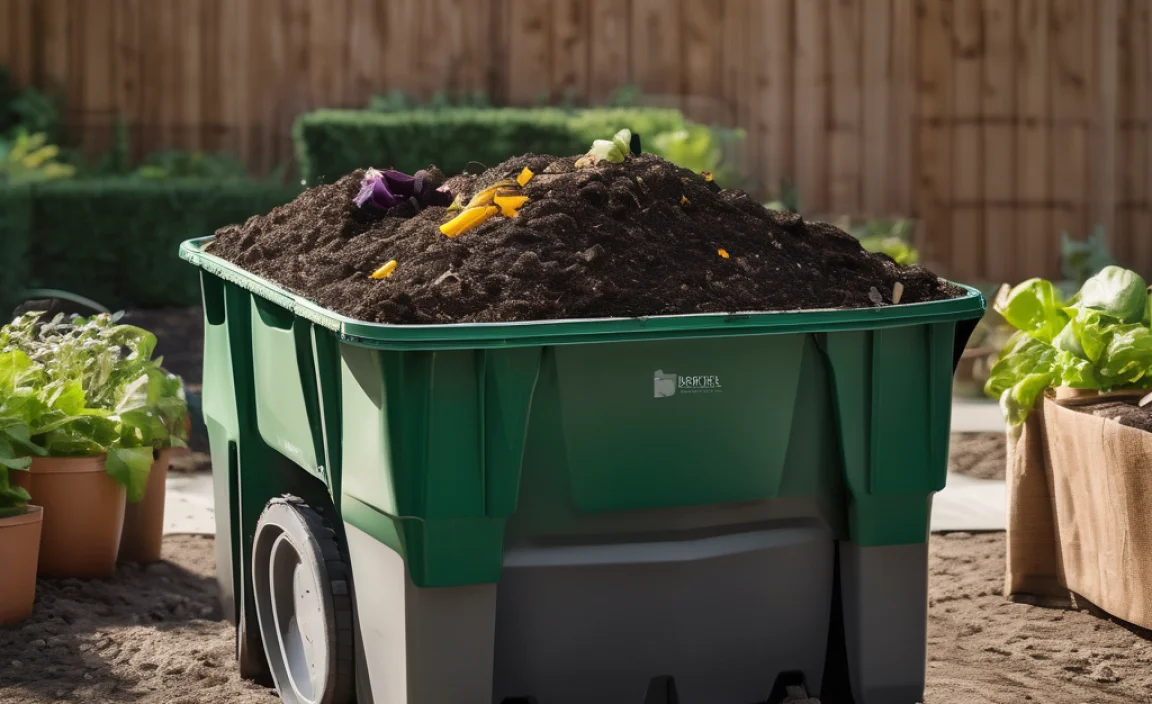
When ordering, you’ll likely see options for compost delivered in bulk (loose) or in large bags. Each has its pros and cons:
| Feature | Bulk Compost (Loose) | Bagged Compost (Super Sack) |
|---|---|---|
| Quantity | Usually sold by the cubic yard; ideal for large projects. | Sold by the cubic yard or half-yard; good for medium to large projects. |
| Price | Generally more cost-effective per cubic yard due to less packaging and handling. | Can be more expensive per cubic yard than loose bulk, but often includes specialized bagging. |
| Delivery | Delivered by dump truck; dumped directly where specified (driveway, yard). Requires space for truck access. | Delivered by a flatbed truck with a forklift; the bag is placed in a specific location. Easier to place precisely but can be heavier. |
| Ease of Use | Requires shoveling and wheelbarrowing from the dump site. Can be messy. | Easier to manage the placement of the bag. You can then shovel out from the bag, which can be more controlled. |
| Quality Control | May vary slightly depending on the supplier’s screening process. | Often screened to a finer consistency. Some may be higher quality or specialized blends. |
| Waste | No packaging waste. | The bag itself is disposable or reusable for other purposes (e.g., garden bags, storage). |
Your Best Bet: For most homeowners needing a significant amount of compost for garden beds, lawns, or general soil improvement, ordering bulk compost is usually the most economical choice. If you need a smaller amount, or want more precise placement, or if your delivery site is very restricted, bagged compost might be a better option.
Tips for Getting the Best Deal
Compost delivery is an investment in your garden, but you can make it more budget-friendly:
- Shop Around: Get quotes from at least 2-3 local suppliers. Prices can vary significantly.
- Buy in Bulk: The more you order, the lower the price per cubic yard usually is. If you can split an order with a neighbor, you might both save money.
- Order Off-Season: Sometimes, suppliers offer discounts during their slower periods (e.g., late fall or winter) for orders to be delivered when you need them in spring.
- Check for Pick-Up Options: If you have a truck and trailer, some suppliers allow you to pick up compost directly. This saves you the delivery fee entirely.
- Ask About “Second Pass” or Unscreened Compost: If you’re not too fussy and plan to till it into a new bed, some places might offer compost that hasn’t been finely screened at a lower price. Just be prepared to find larger organic pieces.
- Look for Local Municipal Programs: Some city or county waste management facilities offer compost produced from yard waste and food scraps, often at a lower cost or even for free to residents. Check your local government’s website.
Potential Pitfalls to Avoid
While generally straightforward, there are a few things that can go wrong:
- Poor Quality Compost: This is why choosing a reputable supplier is key. Bad compost might be full of weed seeds, plastic debris, or have an off-putting smell (indicating it’s not fully decomposed).
- Delivery Issues: Trucks getting stuck, dumping in the wrong place, or damage to property. Clear communication with the supplier and preparation of the site are vital.
- Underestimating Your Needs: Running out of compost mid-project is frustrating. It’s better to have a little extra than not enough.
- Overestimating Your Needs: Too much compost, especially if it’s stored poorly outdoors, can lose some of its benefits over time.
- Incorrect Compost Type: Using a compost that’s too “hot” (rich in fresh manure) can burn plant roots. Or using something too acidic for the wrong plants.
.lwrp.link-whisper-related-posts{
margin-top: 40px;
margin-bottom: 30px;
}
.lwrp .lwrp-title{}.lwrp .lwrp-description{
}
.lwrp .lwrp-list-container{
}
.lwrp .lwrp-list-multi-container{
display: flex;
}
.lwrp .lwrp-list-double{
width: 48%;
}
.lwrp .lwrp-list-triple{
width: 32%;
}
.lwrp .lwrp-list-row-container{
display: flex;
justify-content: space-between;
}
.lwrp .lwrp-list-row-container .lwrp-list-item{
width: calc(25% – 20px);
}
.lwrp .lwrp-list-item:not(.lwrp-no-posts-message-item){max-width: 150px;
}
.lwrp .lwrp-list-item img{
max-width: 100%;
height: auto;
object-fit: cover;
aspect-ratio: 1 / 1;
}
.lwrp .lwrp-list-item.lwrp-empty-list-item{
background: initial !important;
}
.lwrp .lwrp-list-item .lwrp-list-link .lwrp-list-link-title-text,
.lwrp .lwrp-list-item .lwrp-list-no-posts-message{}@media screen and (max-width: 480px) {
.lwrp.link-whisper-related-posts{}
.lwrp .lwrp-title{}.lwrp .lwrp-description{
}
.lwrp .lwrp-list-multi-container{
flex-direction: column;
}
.lwrp .lwrp-list-multi-container ul.lwrp-list{
margin-top: 0px;
margin-bottom: 0px;
padding-top: 0px;
padding-bottom: 0px;
}
.lwrp .lwrp-list-double,
.lwrp .lwrp-list-triple{
width: 100%;
}
.lwrp .lwrp-list-row-container{
justify-content: initial;
flex-direction: column;
}
.lwrp .lwrp-list-row-container .lwrp-list-item{
width: 100%;
}
.lwrp .lwrp-list-item:not(.lwrp-no-posts-message-item){max-width: initial;
}
.lwrp .lwrp-list-item .lwrp-list-link .lwrp-list-link-title-text,
.lwrp .lwrp-list-item .lwrp-list-no-posts-message{};
}

I am passionate about home engineering. I specialize in designing, installing, and maintaining heating, ventilation, and air conditioning systems. My goal is to help people stay comfortable in their homes all year long.
